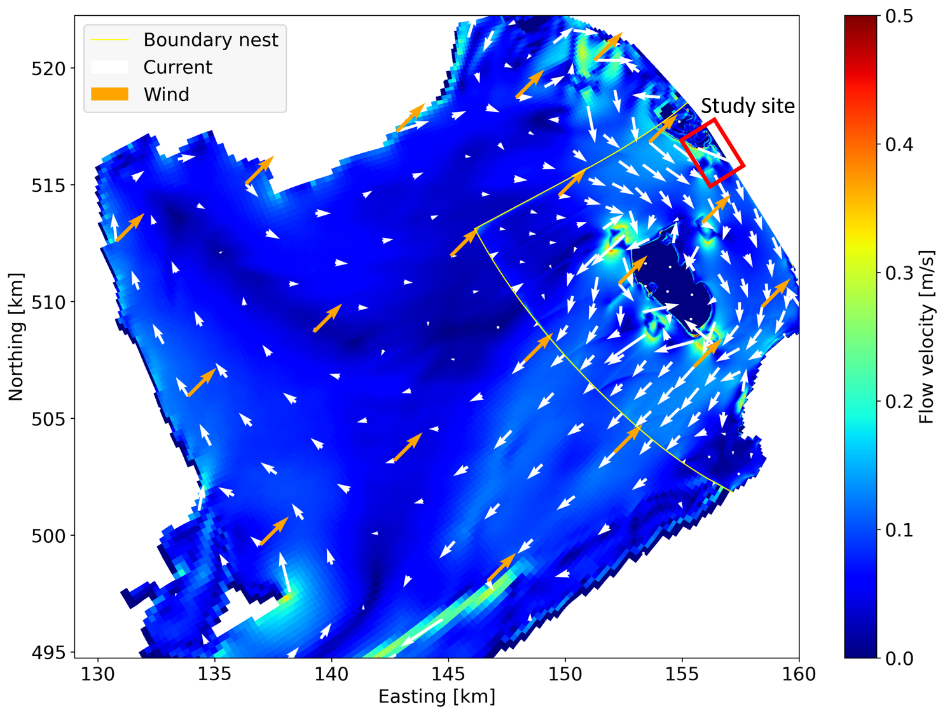A.M. Ton1*, V. Vuik1,2, R.J.A. Wilmink3, S.G.J. Aarninkhof1
1 Delft University of Technology
2 HKV Lijn in water
3 Rijkswaterstaat
*corresponding author:
Introduction
Hydrodynamic and morphological processes at low-energy or sheltered beaches can be significantly different compared to open, high-energy coasts. Ton et al. (2020) set up a conceptual model for morphological development of low-energy, sandy beaches in the cross-shore direction based on data from newly-constructed lake beaches. Next to this initial cross-shore profile readjustment, the data revealed additional sediment losses driven by gradients in the alongshore sediment transport rate. The goal of this research is to find out how longshore currents driven by waves and large-scale lake circulations affect the longshore transport.
Results and Conclusions
Alongshore volume changes at the Houtribdijk could convincingly be related to the longshore transport capacity based on ADV flow measurements. Model results show that large-scale wind set-up driven currents make up, up to 90% of the nearshore current. This shows that wave driven longshore currents may have an effect, but minor compared to the wind set-up driven currents. Concluding, our analysis has shown that the design and implementation of sandy beaches and foreshore in confined lake environments cannot be achieved without considering the effect of large-scale, wind-driven flow circulations on nearshore sediment losses.

Figure 1: Delft3D model results of total Markermeer model and nest of Houtribdijk site and Marker Wadden for southwestern wind.
Acknowledgement
This research is part of the LakeSIDE project, which is funded by Rijkswaterstaat. We want to thank contractors Boskalis and van Oord for supplying us with bathymetric data.
References
Ton, A.M., Vuik, V., Aarninkhof, S.G.J., 2021. Sandy beaches in low-energy, non-tidal environments: Linking morphological development to hydrodynamic forcing. Geomorphology 374, 107522. https://doi.org/10.1016/j.geomorph.2020.107522
I. Surname1*, F.N. Another-Surname2 , Y. Next-Surname2
1 University Name, Country; 2 Organization Name, Country
* Corresponding author: mail.name@organization.org


